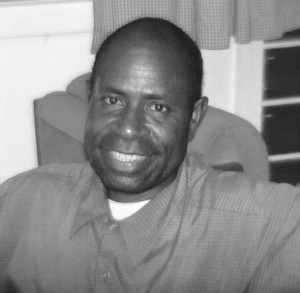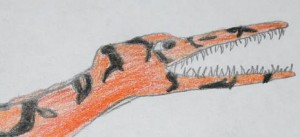 Jacob Kepas the Baptist minister, native to Papua New Guinea (raised in the eastern part of the mainland), has assisted a number of Americans, for many years, in searching for the ropen. Few persons have contributed more to cryptozoological expeditions searching for living pterosaurs. Here is what is written about him on one blog, “The Bible and Modern Pterosaurs“:
Jacob Kepas the Baptist minister, native to Papua New Guinea (raised in the eastern part of the mainland), has assisted a number of Americans, for many years, in searching for the ropen. Few persons have contributed more to cryptozoological expeditions searching for living pterosaurs. Here is what is written about him on one blog, “The Bible and Modern Pterosaurs“:
. . . Kepas and his guide described how they had observed the sleeping winged creature. They had tried to videotape it from the hill they had climbed, but the resulting footage was poor . . . But even with binoculars, Kepas had been uncertain that it was the creature that they sought until his guide climbed up higher for a better view, confirming that it was an indava. . . . Regarding the objectiveness of Kepas, in his 2006 sighting of what was identified as an indava, consider this: Kepas himself voiced his uncertainty that what he was observing was the creature that they had sought; the distance and viewing angle made identification difficult. After the other man had climbed higher, obtaining a better viewing angle, it was confirmed to be an indava. This confirms that Kepas is capable of objectiveness in his observations, for he did not force a conclusion when the conditions were inadequate for certainty.
As I recall, this photo of Pastor Kepas was for requesting financial assistance for one or more of the churches in Papua New Guinea (a roof for a church and new hymn books, or something like that), so, for those to whom it may apply, your assistance would be very much appreciated. The contact person in Papua New Guinea would probably be the American missionary James Blume. Thank you.



